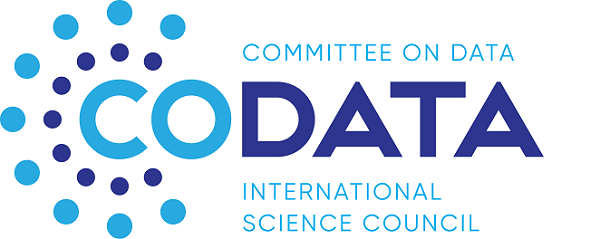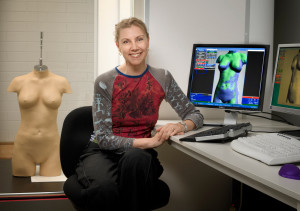This blog post comes from Elizabeth Griffin, chair of the CODATA Data at Risk Task Group.
 Pursuing its objective to raise awareness of the imperative scientific need to find, rescue and digitize pre-digital observations for the benefit of research into long-term changes in the natural world, the Data At Risk Task Group (DAR-TG) went east recently to lead a Panel Discussion at the conference on Digital Preservation and Development of Trusted Digital Repositories held in New Delhi. Organized jointly by the UK-based Alliance for Permanent Access and the Indian Centre of Excellence for Digital Preservation, the meeting drew participants from around the world as well as from the length and breadth of India. The composition of the Panel was an even match of western-based representatives and Indian counterparts, and gelled remarkably well in the circumstances. The Panel offered answers to pre-set questions, and took more from the floor, on themes that challenged the TG’s declared need for recovering and digitizing historic data, and its assumptions that projects so geared would be conducted successfully. We debated how to convince skeptics of the scientific value of spending resources on heritage data, what results might be expected by incorporating them into modern research, and what major problems could be foreseen and how to tackle them. The unanimous response was examples, examples, examples – cite projects that returned new scientific knowledge which could not have been gained by any other means. Playing the devil’s advocate is a powerful method of reinforcing determination, and DAR-TG has since been happy to recruit one of the Indian panelists and one of the audience as TG members. A conference delegate from South Africa has also joined the TG.
Pursuing its objective to raise awareness of the imperative scientific need to find, rescue and digitize pre-digital observations for the benefit of research into long-term changes in the natural world, the Data At Risk Task Group (DAR-TG) went east recently to lead a Panel Discussion at the conference on Digital Preservation and Development of Trusted Digital Repositories held in New Delhi. Organized jointly by the UK-based Alliance for Permanent Access and the Indian Centre of Excellence for Digital Preservation, the meeting drew participants from around the world as well as from the length and breadth of India. The composition of the Panel was an even match of western-based representatives and Indian counterparts, and gelled remarkably well in the circumstances. The Panel offered answers to pre-set questions, and took more from the floor, on themes that challenged the TG’s declared need for recovering and digitizing historic data, and its assumptions that projects so geared would be conducted successfully. We debated how to convince skeptics of the scientific value of spending resources on heritage data, what results might be expected by incorporating them into modern research, and what major problems could be foreseen and how to tackle them. The unanimous response was examples, examples, examples – cite projects that returned new scientific knowledge which could not have been gained by any other means. Playing the devil’s advocate is a powerful method of reinforcing determination, and DAR-TG has since been happy to recruit one of the Indian panelists and one of the audience as TG members. A conference delegate from South Africa has also joined the TG.
Where does India stand in regard to endangered historic scientific data? More pertinently, perhaps, one should ask how well a country of such size, diversity and infrastructural challenges can dedicate time and resources into what may seem to be a rather esoteric pursuit. Yet as the contributions to the main conference amply demonstrated, India is making impressive strides towards establishing standards and practices in things digital at formal levels, though it was harder to judge commitment to physical data recovery since actual data-gatherers were in something of a minority at such a meeting. The data-rescue projects that were presented revealed the same problems of dedicated funding and recognition that undermine corresponding projects in the so-called developed world, and in India they are of course additionally complicated by the size of the tasks, even by the sheer geographical diversity to be spanned.
![]() One step at a time is always sound advice in such circumstances, and DAR-TG plans to heed that advice at SciDataCon 2014 in New Delhi next November (held jointly with CODATA’s own General Assembly), where it hopes to organize a Session dedicated to the rescue of pre-digital data in India, calling on representatives of Indian scientific teams (already identified by our new member from Lucknow University) to describe prevailing situations in their own fields and seeking to formulate a plan for a national data-rescue initiative. Such a session will provide a clearer picture of the amounts and kinds of pre-digital data in India that definitely need to be recovered, some idea of the priorities to be attached to them, and the potential for doing so at government, university or private levels.
One step at a time is always sound advice in such circumstances, and DAR-TG plans to heed that advice at SciDataCon 2014 in New Delhi next November (held jointly with CODATA’s own General Assembly), where it hopes to organize a Session dedicated to the rescue of pre-digital data in India, calling on representatives of Indian scientific teams (already identified by our new member from Lucknow University) to describe prevailing situations in their own fields and seeking to formulate a plan for a national data-rescue initiative. Such a session will provide a clearer picture of the amounts and kinds of pre-digital data in India that definitely need to be recovered, some idea of the priorities to be attached to them, and the potential for doing so at government, university or private levels.
India also has vast tracts of pre-digital cultural data extending back across more than 5 millennia, covering a huge range of climatic conditions and embracing not only distinct regional cultures but also four major world religions. It could be argued that ancient scripts and pictures are just as much in need of cataloguing and protecting as are pre-digital scientific records, but in the face of such enormous challenges DAR-TG will do well to concentrate on scientific areas and media that are familiar, in the hope that the examples that are set and the good results that are achieved will feed into national programmes to improve the preservation and dissemination prospects of its cultural assets too.









